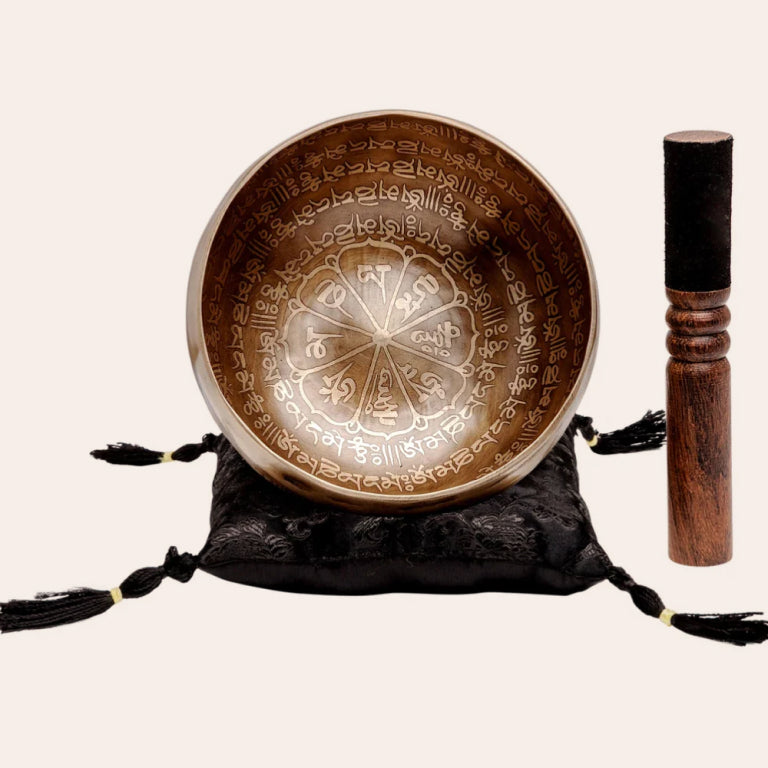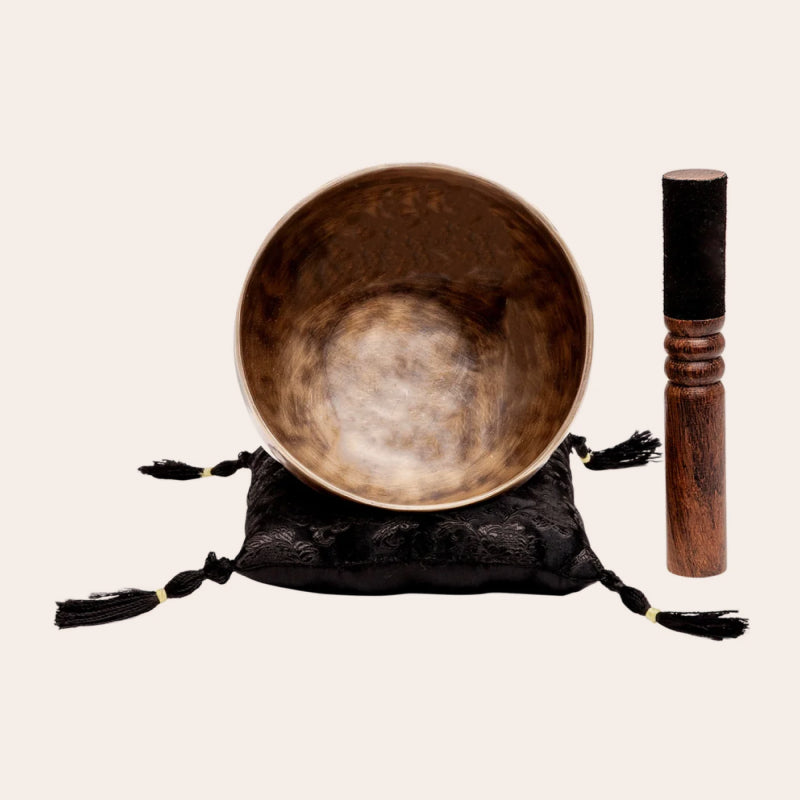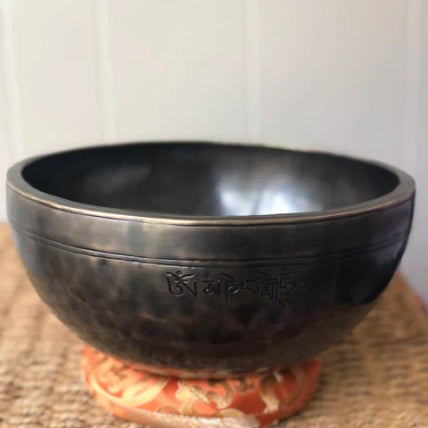Singing Bowl Guide: Part 1- Anatomy of Singing Bowls
Singing bowls or inverted bells are thousands of years old and available in wide varieties today.
Moreover, these bowls are completely acoustic and played with wooden mallets atop cushions or palms.
But how well do you know singing bowls? What are the three important parts of singing bowls?
Whether you’re new, or very practiced with singing bowls, this article will help you build a concrete foundation to play, use, and grow with them.
Read on to learn the parts of singing bowls, their functions, and their uses today.
Please note this is the first part in a series of five articles that decode everything about singing bowls.
Let’s dive right in!
The Basic Parts of a Singing Bowl
From the oldest worship bowls to new age quartz bowls, all types of singing bowls make healing sounds. To understand how it works, let’s find out the three parts of every singing bowl and their effects.
-
The Body Of A Singing Bowl
Metal and crystal singing bowls are made with acoustic bodies, and that’s primarily why you can play them for 1,000 years and more. (Read more about Longplayer Project.)
Besides, singing bowls are thousands of years old and hence, have a lot of varieties.
You can divide them based on their materials, shapes, circular rims, shallow necks, flat bottoms, and engravings.
The traditional varieties of Tibetan singing bowls are made from metals in nine different ways. Read more about their tonal differences, frequencies, uses, and interesting histories in this article on 9 different types of singing bowls.
Crystal singing bowls are a recent invention made from crushed clear quartz crystals.
Interestingly, the sound of metal singing bowls differs from quartz singing bowls. And even in the metal category, bronze bowls sound different from copper bowls.
The thing to note is the body of a singing bowl is its most important part. So, once a metal singing bowl develops fractures or quartz bowl breaks, you’ll have to replace the whole bowl. Although, some people may be able to solder metallic bowls.
-
Mallet
Every singing bowl comes with a mallet that’s perfect for playing that bowl. And there are so many types of mallets nowadays for different bowls and sounds.
The most popular mallet is the wooden one, often covered with suede, fabric, felt, or leather. The type of mallet, size, weight, and material mostly depends on the type of singing bowl.
For instance, the wool-padded mallet comes from monk’s wool and is great for rimming the side walls of the bowl, while silicone mallets are the only ones that work with quartz bowls.
On the other hand, felt mallets work better with large singing bowls than with small ones.
If you misplace or break a mallet, you can get another by contacting the seller you bought the bowl from. Alternatively, you can buy mallets separately by type from The Ohm Store or other reputed sellers instead of buying a new singing bowl.
-
Cushion
Both metal and crystal singing bowls are more fragile than most people think.
Metal bowls can develop hairline fractures from clashing or falling. Unfortunately, they can ruin the sound. Shattering must be avoided with tempered crystal bowls too. That’s where singing bowl cushions come in.
While playing small singing bowls in your palms is not risky, medium and large-sized singing bowls are safer on flat tables. Keeping the cushion under the bowl on a flat surface with padding is good for the sound too.
That’s why there are wide varieties of singing bowl cushions.
In general, cushions are made from fabrics (cotton, silk), rubber, silicon, and wooden holders in several shapes. Moreover, not all cushions are made for every other sound bowl.
You can get another at the Ohm Store if your singing bowl cushion is stained, torn, or damaged.
How To Set Your Singing Bowl At Home?
Singing bowls are easier to maintain when kept in a specific place. The thing is, it’s better to allot a shelf, table, or corner where it doesn’t clash or fall easily. And you can set it by safety, aesthetics, feng shui, healing directions, and intentions.
But the crucial thing to do is choose a flat surface first. You can check if a surface is flat by keeping a glass of water over it.
Secondly, ensure your singing bowl has enough space around it. Truth be told, even if a metal singing bowl clashes against another, it can crack or get hairline fractures that permanently ruin the sound.
Once a singing bowl is cracked, it produces sounds that don’t last long.
I love keeping the singing bowl I currently use in a spiritual corner in my office, living room, or bedroom. Such a singing bowl altar also includes my smudge sticks, lava stone bracelet, a few ginger pear incenses, and scented candles.
You can add flowers, herbs, leaves, plants, water, and essential oils to this singing bowl altar. Read more about setting up a singing bowl altar in this post.
Apart from aesthetics, keeping your singing bowl in specific directions according to Feng Shui can help you spread good vibes, harmony, and luck at home.
Go ahead and read my in-depth article on 8 Feng Shui directions to keep your singing bowls.
In Summary
So, we learned about the three main parts of a singing bowl: the body, the compatible mallet you get with the bowl, and the cushion.
Here’s a quick summary of the article in a tabular form so you can bookmark Part 1 of Singing Bowl Guide:
|
Part of the Bowl |
Importance |
|
Body |
A complete-acoustic body, differing based on sizes, shapes, weights, materials, age, origin, modifications, and uses. |
|
Mallet |
Metal Bowls: Wooden body with leather, suede, felt, velvet, or fabric padding makes the best sound. |
|
Quartz bowls: Silicon and rubber work best on clear quartz bowls. |
|
|
Cushion |
Made from rubber, wood, fabric (silk, cotton, felt), or silicon, the cushion keeps the bowl safe and flat for playing it seamlessly. |
In Part 2, we’ll learn about all the ways to play singing bowls effortlessly, whether you’re a beginner or a pro.
Stay tuned~










